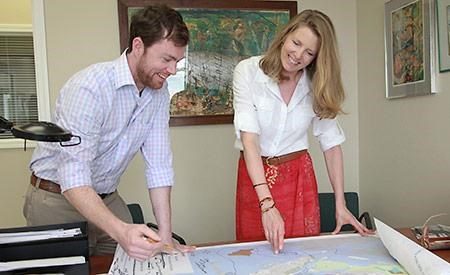Powell River Regional District wants input from residents living north of the city to help determine a vision for the region.
Laura Roddan, the regional district’s manager of planning, said Area A has not had an official community plan (OCP), ever.
“There is one for Lund and the immediate surrounding area,” she said. “The rest of Area A is basically unplanned. There hasn’t been a community visioning exercise or any way to collect community feedback on their issues and concerns.
Area A encompasses the area north of town from the Southview – Wilde Road area toward Lund and beyond. Savary Island is part of Area A but already has an OCP.
“The process we’ve designed to develop the OCP is a community-driven process and we want community input at the front end,” Roddan said. “We’ve used several methods for receiving that input.”
The regional board appointed a community advisory planning committee composed of 12 area residents. There have been four community meetings.
Roddan said a community survey has also been developed. It’s available online on the regional district homepage [www.powellriverrd.bc.ca].
Paper copies of the survey are available at the Powell River Regional District office or at Lund Community Centre and the Lund post office. There is a box there where surveys can be submitted.
Roddan said the regional district is pleased with the participation in the community meetings, but the numbers in the online survey are lower than hoped. “We feel it’s really important for residents of the area to complete the survey,” she said.
The web page also contains other information relating to the OCP. There is a technical background report and a summary of discussions from the recent meetings. There is also a link to the text of all the feedback that has been received so far.
“At this phase we are identifying all the issues and starting to put together a community vision,” Roddan said. The survey will remain online until July 31.
Roddan said the Area A OCP was initiated because the Lund OCP is outdated, having been written in 1998. Generally, an OCP should be updated and reviewed every five to 10 years. There has been no plan to guide land use in Area A outside of Lund.
“Local governments have some obligations to the province to protect riparian areas and fish habitat and to identify natural hazard areas and protect properties and development from risk,” Roddan said. “The OCP will enable this to be done.”
An OCP is not regulatory except for providing the ability to create development permit areas.
“It’s a high-level visioning document,” she said. “There has been concern expressed by sectors of the community that they don’t want regulation, but there’s also a lot of people expressing they want to protect the lifestyle that they have and the environment.”
Jason Gow, regional district planner, said the OCP is not the equivalent of a zoning bylaw and Roddan added that it is not a building bylaw either.
Roddan said the recently completed Tla’amin (Sliammon) Nation treaty is right in the middle of Area A so there is a need to harmonize land use in all of the interface areas.
Area A Director Patrick Brabazon chairs the advisory committee and has been at all of the community meetings. Advisory committee meetings are open. They are held the first Monday of the month at the Lund Community Centre, except in August and September, when it will be the second Monday to accommodate the long weekends.
Over the summer months and into September a draft of the OCP will be written based on the feedback and consultation that has been received. Later in the fall it will be taken back to the community and refined.
“It is hoped by the end of the year or early next year, the regional board will be moving through the bylaw adoption process,” Roddan said.
She added, it is a positive initiative and an opportunity for people who live there to shape the future for the Malaspina Peninsula.
Area A Director Patrick Brabazon said he is a firm believer in advisory committees for OCPs. “We have an excellent one,” he said. “We have a dozen people on it. We’ve worked hard to select people from all over the area.
“They don’t take everything given to them as the gospel truth. They challenge our conceptions and perceptions and I think that’s just great.”
Brabazon said said the Area A OCP is a bottom-up rather than a top-down process and that’s “the only way to do it.”
“There have been differences of opinion in the good discussions that have been held and people are coming to terms with compromise being the order of the day,” he said. “The middle C in OCP stands for community but it could also stand for compromise.”
Brabazon expects there will be consensus in the community when all is done.
Savary Island is excluded from the process because it already has an OCP.



